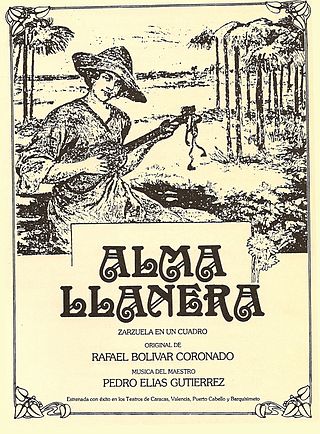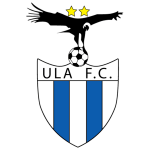
Several styles of the traditional music of Venezuela, such as salsa and merengue, are common to its Caribbean neighbors. Perhaps the most typical Venezuelan music is joropo, a rural form which originated in the llanos, or plains.

The State of Mérida commonly known simply as Mérida is one of the 23 states of Venezuela. The state capital is Mérida, in the Libertador Municipality.

Táchira State is one of the 23 states of Venezuela. The state capital is San Cristóbal.

San Cristóbal is the capital city of the Venezuelan state of Táchira. It is located in a mountainous region of Western Venezuela. The city is situated 818 metres (2,684 ft) above sea level in the northern Andes overlooking the Torbes River, 56 kilometres (35 mi) from the Colombian border. San Cristóbal was founded on March 31, 1561, by Juan de Maldonado. From its inception, the city evolved rapidly as one of the most progressive and important centers of commerce in the country and the region, due primarily to its rich soil and its proximity to the border with Colombia.

Municipalities of Venezuela are subdivisions of the States of Venezuela. There are 335 municipalities dividing the 23 states and the Capital District.

Unión Local Andina Fútbol Club, usually known as Universidad de Los Andes, or by the acronym ULA, was a Venezuelan football club based in Mérida.
Universidad de Los Andes Televisión, abbreviated ULA TV, was a television station in Mérida, Mérida, Venezuela, that was owned by the Universidad de Los Andes. The station began broadcasting in 1999 and was shuttered by the National Commission of Telecommunications (CONATEL) on June 15, 2017.

Mérida, officially known as Santiago de los Caballeros de Mérida, is the capital of the municipality of Libertador and the state of Mérida, and is one of the main cities of the Venezuelan Andes. It was founded in 1558 by Captain Juan Rodríguez Suárez, forming part of Nueva Granada, but later became part of the Captaincy General of Venezuela and played an active role in the War of Independence.

The Roman Catholic Archdiocese of Mérida is a Latin Rite Metropolitan Archdiocese in western Venezuela.
The University of the Andes Library Services, officially known as SERBIULA, is the organization responsible for managing and directing all the different libraries of its parent institution, the University of the Andes, one of the main universities in Venezuela.
Gonzalo Piña Ludueña or Lidueña was a Spanish conquistador and colonial administrator in the Province of Venezuela between 1597 and 1600.

The Lorenzo Mendoza Fleury Science Prize, also known as the "Premio Fundación Empresas Polar" is the most important award offered by the private sector to contemporary scientists from Venezuela who have shown outstanding talent, creativity and productivity during a given period.

Sur del Lago de Maracaibo is a subregion comprising the territory of the municipalities Jesús María Semprún, Catatumbo, Colón, Francisco Javier Pulgar and Sucre from Zulia state and the municipality Alberto Adriani, Obispo Ramos Lora and the population of Palmarito from Tulio Febres Cordero municipality from the state of Mérida, Venezuela. Its major towns are Santa Barbara del Zulia, San Carlos del Zulia and El Vigia, which represents its economic epicenter.

The Battle of Los Horcones, part of the Admirable Campaign, was a military conflict in Venezuela during the Spanish American wars of independence fought on 22 July 1813 between the pro-independence forces led by José Félix Ribas and Spanish Royalist troops under colonel Francisco Oberto at the plain of Los Horcones. Ribas was victorious, capturing much of the Spanish equipment and more than 300 prisoners.

The Basilica of Our Lady of Consolation of TaribaSpanish: Basílica de Nuestra Señora de la Consolación) is a Roman Catholic Marian shrine and basilica located in the state of Táchira in Venezuela.

José Manuel Briceño Guerrero was a Venezuelan writer, philologist and philosopher. A large part of his work was published under the pen-name Jonuel Brigue.
This is the list of members elected in the 2017 Constituent National Assembly of Venezuela following the 30 July 2017 elections. The first session of the assembly began on 4 August 2017 in the Oval Room of the Palacio Federal Legislativo. The Democratic Unity Roundtable—the opposition to the incumbent ruling party—also boycotted the election claiming that the Constituent Assembly was "a trick to keep [the incumbent ruling party] in power." Since the opposition did not participate in the election, the incumbent Great Patriotic Pole, dominated by the United Socialist Party of Venezuela, won almost all seats in the assembly by default.

Samuel Darío Maldonado Vivas was a Venezuelan surgeon, anthropologist, writer, journalist and politician. He is known for his work as a sanitary doctor and as director of the National Health Office during the government of Juan Vicente Gómez.
Luisa Teresa Pacheco de Chacón was a Venezuelan politician. She was the first female governor of Táchira state, appointed by President Jaime Lusinchi. Among the events that took place during her administration was the formal inauguration of the Táchira Museum on 14 December 1984. Luisa Teresa has also worked as a teacher.

















